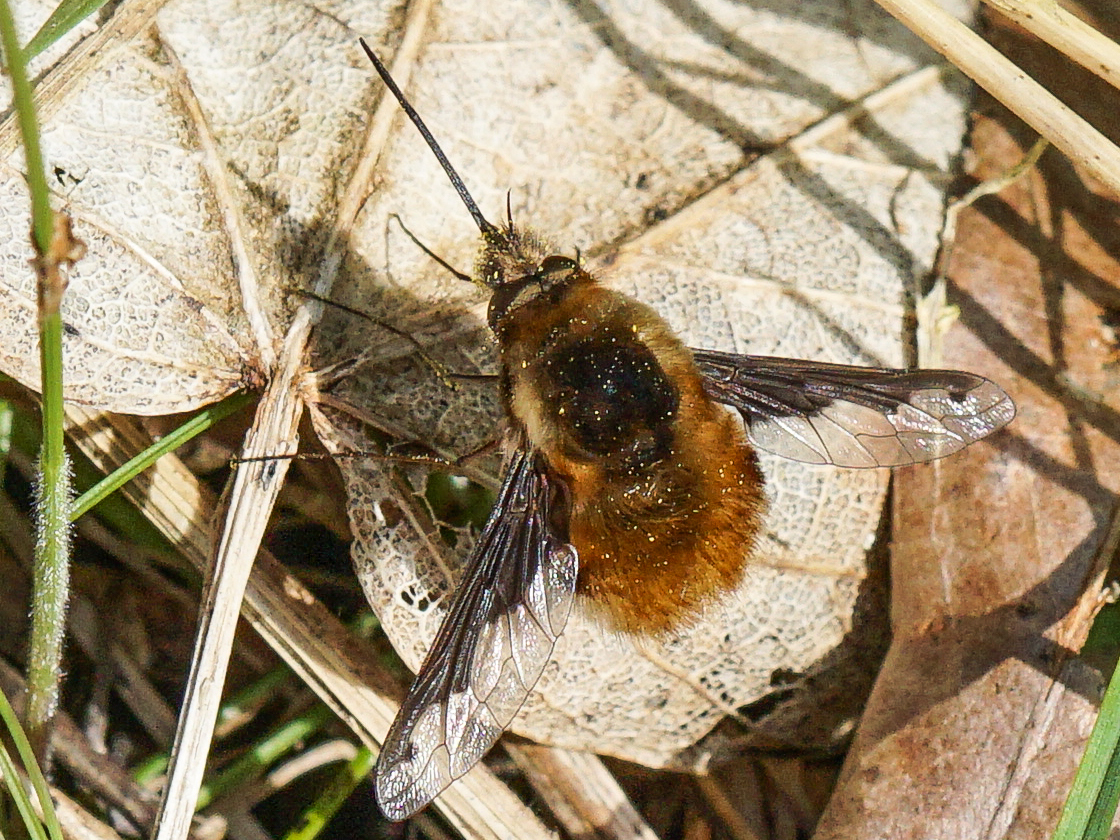
Paul writes: This is an early spring fly, which I’m hoping to see in the next week or so, however the recent cold weather may put things back a week or more. This one I found last year, on 30 March, at Burton Riggs Nature Reserve, near Scarborough. The Dark-edged Bee-fly (Bombylius major) occurs throughout the UK. The further south it occurs the earlier it will appear. At first sight it looks a bit like a bumblebee or a hoverfly (it is an expert hoverer) but once it settles, the long proboscis and characteristic wing pattern make it quite easy to identify. It’s common in gardens or urban parks and is usually first noticed hovering intently and feeding on spring flowers. It will also bask in sunlight on foliage or leaf litter.
Its larvae are parasitoids of the grubs of solitary mining bees. Once the female bee-fly finds a suitable bee’s nest she hovers above it whilst flicking her eggs towards the entrance. After they hatch, the larvae locate the nest and enter it. Then they will take over a cell, and consume any stored food and also the bee’s grub, once it has hatched.
Mark writes: I know these and get them in my garden in east Northants. I call them ‘flying noses’ and they are one of my looked-for harbingers of Spring.
[registration_form]
Bee-flies are one of the “allies” in the Soldierflies and Allies Recording Scheme, and for the last few years we’ve been running Bee-fly Watch each spring. To find out more, to download an identification guide and to send in your sightings see Bee-fly Watch 2018.
They are certainly having a late year – so far in 2018 we’ve had just 11 records, with the furthest north being at Corby, Northants. By 25 March 2017 we’d had 147 records, and it had been seen as far north as Northumberland.
If you have the Bee-fly in your garden, Mark, its likely you also have the the host solitary mining bee. Something else to look out for this Spring!
They are difficult to photograph – well done on yours.